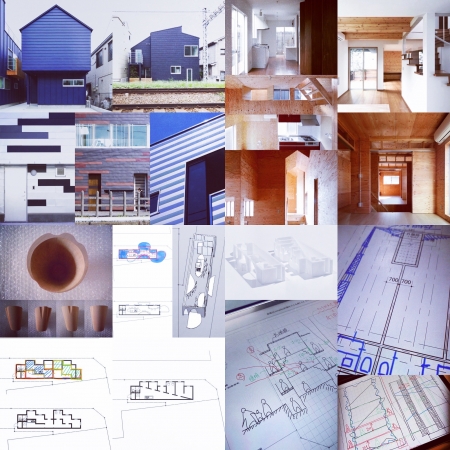静的と動的の補完し合い
人と建築の関係性からなる部分と、建築の骨格というか建築の素の部分を切り離せば良いと思った。人と建築の関係性からなる部分は同じ位のスケールで考える。それは建築が容れ物になるのではなくて、人と建築が並列になることによって関係性がヒエラルキーなくフラットになり、より人と建築が直に呼応し合う関係性が生まれる。
そして、建築の素の部分は人から切り離されて、人からの影響を受けず、普遍、不変に近い状態、別の言い方をすれば静的状態になる。それでいうと、人と建築の関係性からなる部分は動的状態になる。
静的な部分は動的な部分に足りないスケールを担保する。動的な部分は静的な部分が受けつけない人の内面である感情などを反映する。静的と動的の双方が補完し合い建築全体が構成される。それは自律と他律が同時に成り立ち建築が形成されることでもある。静的も動的も自律しながら、同時に他律も加味しないと建築として成立しない。
"Static and dynamic complementation"
I thought it would be good to separate the part that consists of the relationship between people and architecture from the skeleton of architecture or the basic part of architecture. Think of the relationship between people and architecture on the same scale. It is not that architecture becomes a container, but that the relationship between people and architecture becomes flat without hierarchy, and a relationship in which people and architecture directly interact with each other is created.
And the basic part of architecture is separated from people, unaffected by people, and becomes a universal, near-immutable state, or in other words, a static state. In that sense, the part consisting of the relationship between people and architecture becomes a dynamic state.
The static part guarantees a scale that is insufficient for the dynamic part. The dynamic part reflects the emotions inside the person that the static part does not accept. Both static and dynamic complement each other to form the entire architecture. It also means that autonomy and heteronomy are established at the same time and architecture is formed. It cannot be established as an architecture unless both static and dynamic are autonomous, and at the same time heteronomy is taken into consideration.


